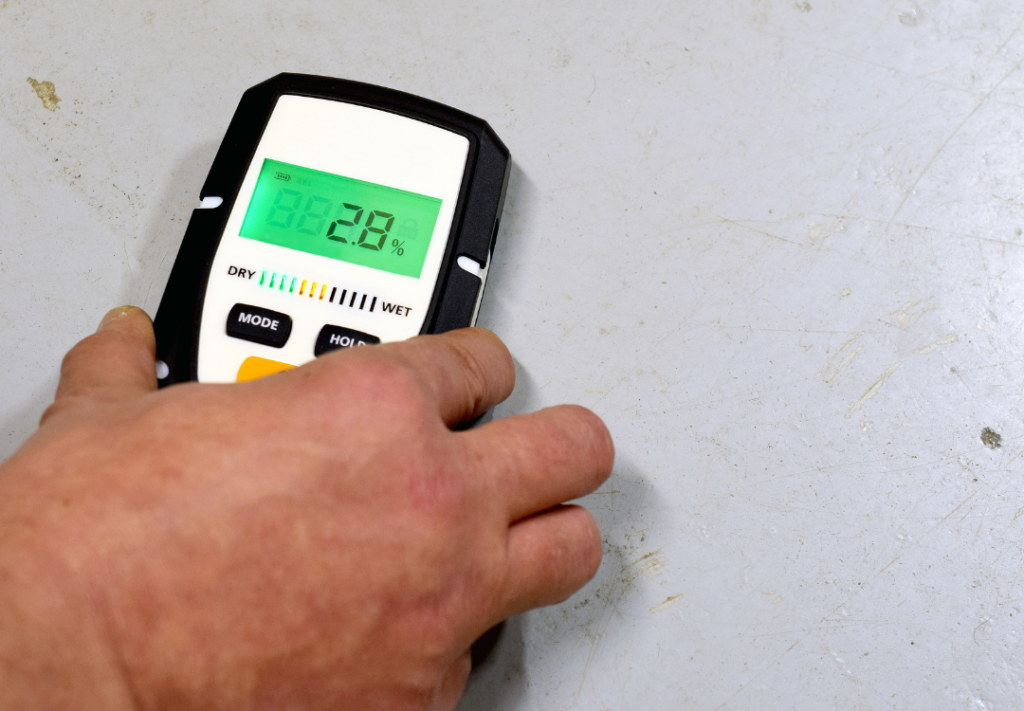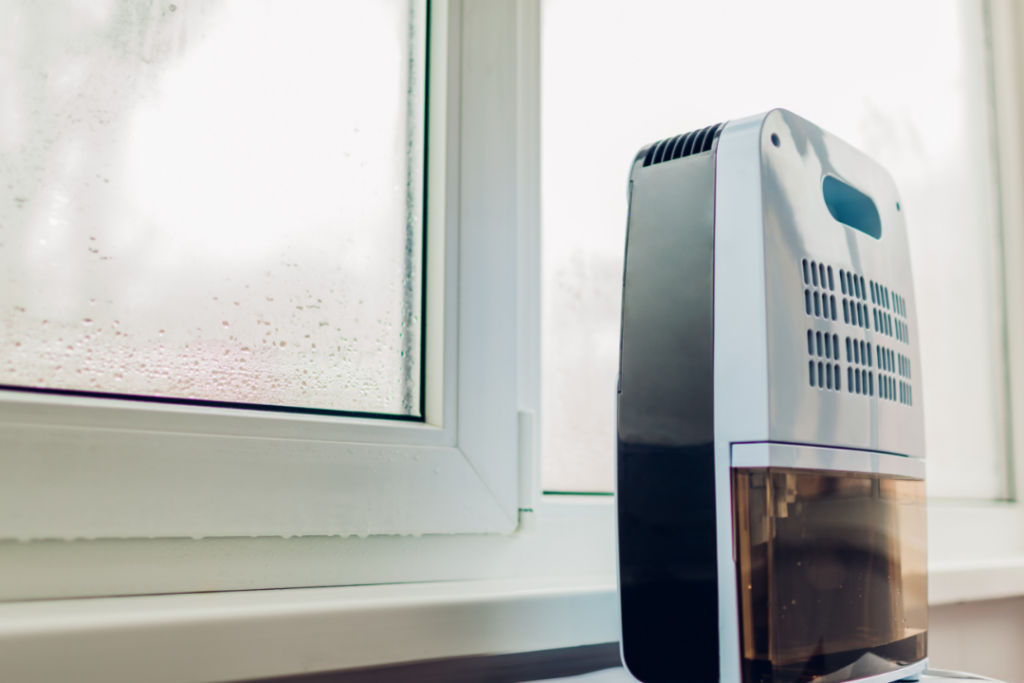Builders typically apply a screed to get a completely level floor on a concrete slab. Once the screed has dried, they add the flooring finishes such as tiling, vinyl or carpet.
The only problem with this approach is that it slows down the process because you must allow the screed to dry, and drying time depends on several factors.
So, how long does screed take to dry and what factors affect the drying time? I answer these two important questions and provide pro tips for speeding up the drying process.
What is Screed?
To answer the question ‘how long does it take for a screed to dry’ you first need to know what type of screed you’re laying.
There are two types of screed commonly used in flooring:
- Sand and cement
- Latex
Sand and Cement Screed
A sand and cement screed is a traditional method for achieving a nice finish for laying tile or carpet. Because a lot of water is added to the mix — around 5 litres per square metre in a 50mm thick screed — this type of screed takes longer to dry out than a latex screed.
Sand/cement screeds are either unbonded or bonded to the concrete slab.
Unbonded means the screed is laid on top of a damp-proof membrane, underfloor heating mats, or insulation (also known as a floating screed). As the screed is separated from the concrete base, unbonded screeds tend to be thicker and stronger.
Latex Screed
A latex screed is a mix of powder and liquid latex poured over a concrete slab to provide a flat, level surface. For this reason, builders often refer to latex screed as a ‘levelling screed’.
As a latex screed is thin compared to a sand/cement screed — usually varying from 1 to 5mm — and it doesn’t contain water, it dries out much quicker.
Typical Drying Times

You can usually walk on a screed floor a day or two after laying, but this doesn’t mean it’s dry enough to lay flooring. The main factors affecting drying time are:
- Weather conditions, in particular, relative humidity (RH)
- Type and thickness of screed
- The finish you intend to cover the screed with (e.g. ceramic tiles, carpet or laminate)
The last factor may seem odd, but it’s more about the type of material you intend to put down. For instance, you don’t need to dry the screed entirely if you’re fixing ceramic tiles, whereas you can only apply laminate flooring to a completely dry screed. Carpet fits somewhere in the middle.
To accurately establish the water content of the screed, you must perform a Calcium Carbide Test. This test involves removing and testing a core sample of the screed.
A much more straightforward but less accurate alternative is using a digital moisture meter, which inserts probes into the screed. These probes penetrate the top few millimetres of the screed and let you take several readings across the floor.
These meters measure moisture content in percentage terms. For carpet, this should be no more than 1%. Unfortunately, 1% is less than the minimum on some cheaper models, so you must make a judgment call.
Screed Drying Times
This table assumes that there isn’t excessive moisture in the air — say 50% RH — and that screeds can dry out naturally.
| Screed Type | Thickness | Finish | Drying time |
|---|---|---|---|
| Sand/cement | 50–70mm | Laminate flooring | 8–15 weeks |
| 50–70mm | Ceramic tiles | 3–5 days | |
| 50–70mm | Carpet | 6–10 days | |
| Latex | 2–5mm | Any finish | 24 hours |
How To Dry Screed Faster

There are ways to speed up the drying process, but don’t rush things too much.
A thick screed can crack if it dries too quickly, and an unbonded screed can curl at the edges if it dries unevenly.
Here are four options to consider:
- Introduce a dehumidifier to the room
- Use a heater to warm the air — 20°C is the ideal temperature for drying
- Make sure the room is well-ventilated, except when using a dehumidifier
- Add a hydraulic binder to the mix, such as Mapei Mepcem
Pro Tip: adding chemicals, fibres and polymers to a screed requires a specialist. Don’t add anything unless you know what you’re doing. Proprietary screeds contain precisely the right amount of additives, so use these and follow the instructions if you’re doing it yourself.
Final Thoughts
As a guide, allow 6 to 10 days, depending on the thickness of the screed. This dry time can be less if you use one of the above drying techniques.
Carpet fitting is not everyone’s favourite DIY job, so if you want to hire a professional, check out our carpet fitting cost guide.

